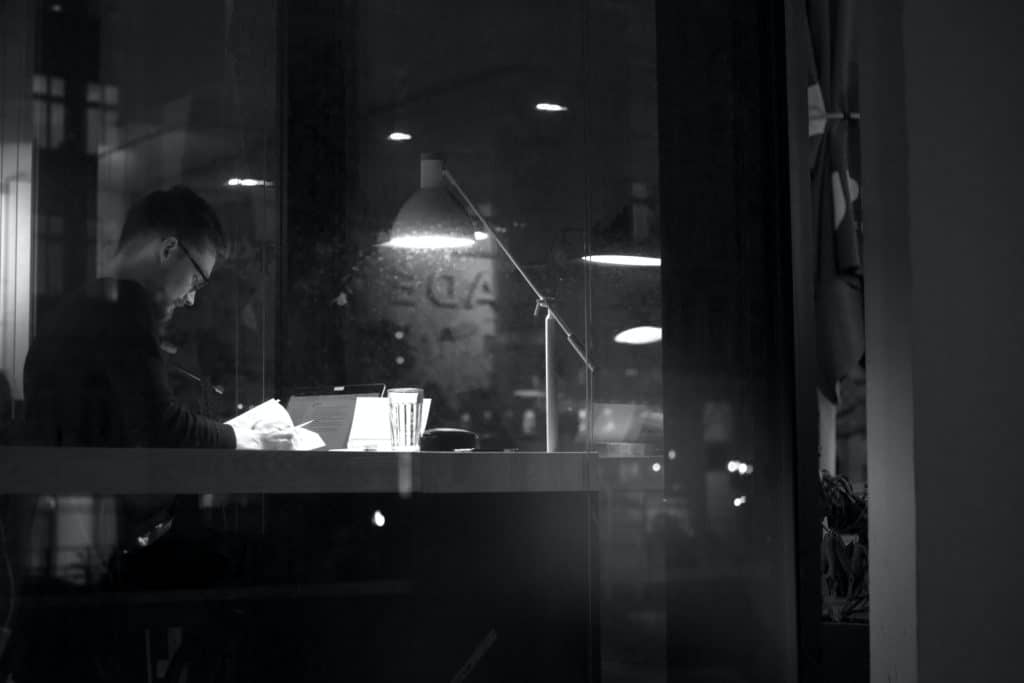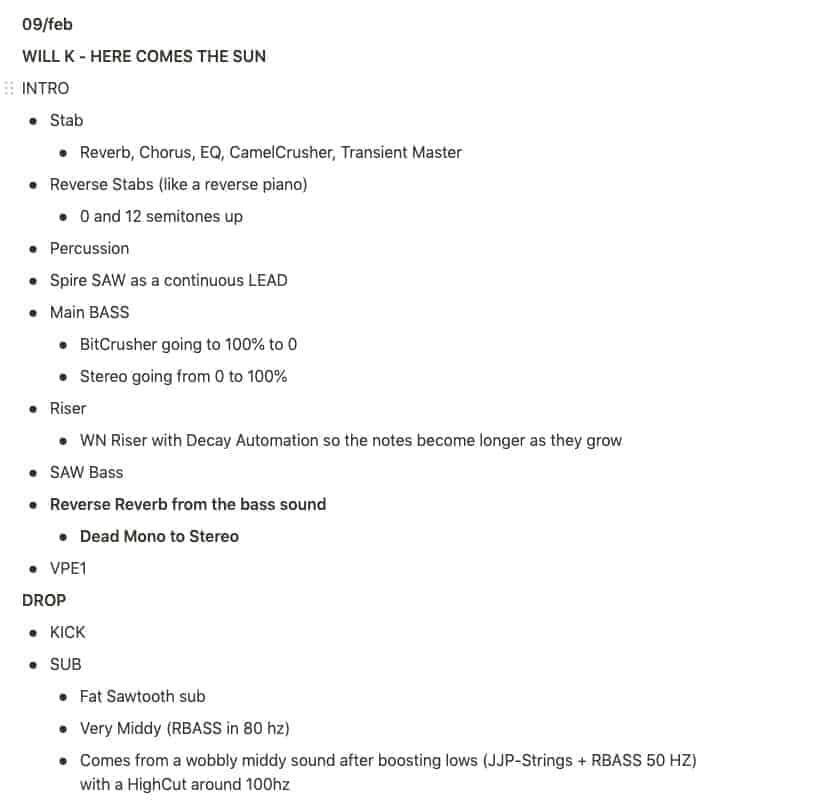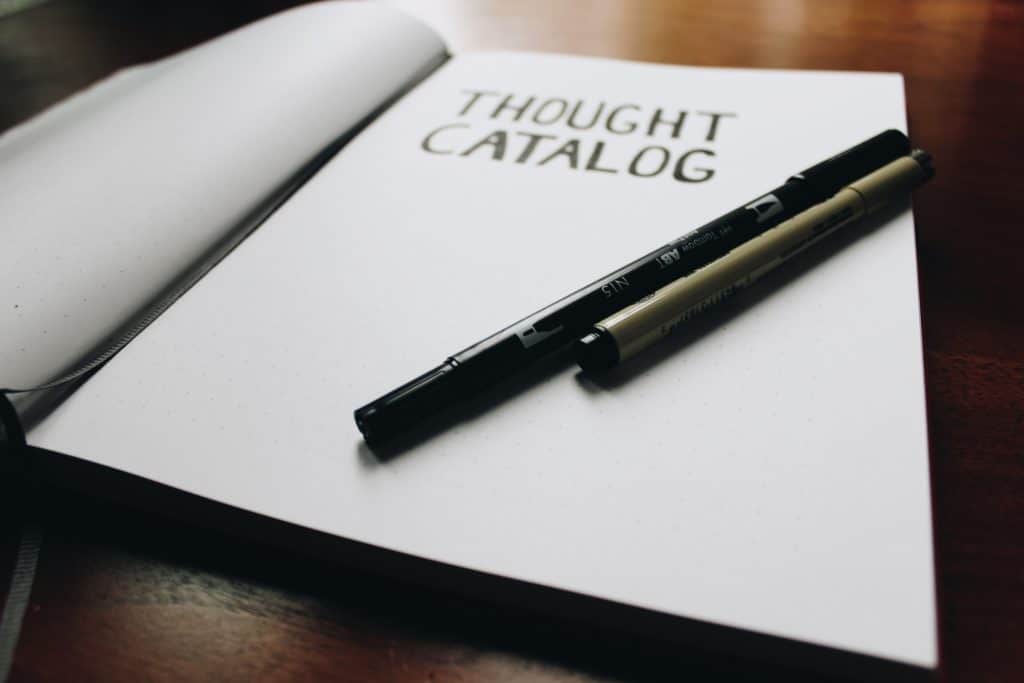Today I’m sharing 14 tips so you can start stealing from released tracks, project files and studio walkthroughs like a PRO.
As an artist, there are plenty of resources to get creativity from, and one of them is stealing. Quentin Tarantino, one of the greatest movie directors of all time, once said, “I steal from every single movie ever made. (…) If my work has anything, it’s that I’m taking this from this and that from that and mixing them together.”

Therefore, I wanted to share with you today how to Steal like An Artist, a post highly inspired by one of the recent books I’ve read by Austin Kleon. Here’s what we’ll go through today:
- The difference between stealing and copying
- 8 things you can steal from released tracks
- Stealing from Project Files
- Stealing from Studio Walkthroughs
- Keeping your stealing record
The Difference Between Stealing and Copying
Copy is when you rip off someone. You’re basing yourself out of one person and you’re literally just imitating what others do. You do it because you like the person’s work, but honestly, you are just trying to replicate his success in what you’re doing.
When you’re learning to produce, there’s a valuable skill to learn from just copying, which is arrangement and composition. When copying, you learn how the PROs arrange tracks and when your time comes to arrange, you’ll have a better understanding of what to do next since you’ve seen how the PROs do it.
Stealing is when you copy from someone’s work but also modify it so it looks like it’s yours. You’re basing yourself off of multiple sources and you’re combining them in a way no one has ever thought of or putting a unique touch into them. You do it because you like one part from one track and another part from another, but you’re challenging yourself to reinterpret their work into your own way.
George Lucas, the creator of Star Wars, did a movie that was unique and it is full of scenes copied from other sources. Well, not copied, but adapted to Lucas’ new plot, which didn’t make him less of a creator. On the contrary, this shows the genius in him from being able to convert old scenes into new plots.
Check the video below to check the scenes used in Star Wars from other movies, but check from how many movies he stole from and how little the pieces are:
Although he used multiple scenes from other movies, this doesn’t make Star Wars a copy because of all the context that it was built into. It’s one scene from here, another scene from there, and it’s not copying, it’s picking what he most liked in other movies, combining them and applying a new plot. That’s stealing like an artist. If you want to read more about it, head over to this post!
8 Things You Can Steal From Released Track
Ok, but how can you apply this to music and steal from tracks you like? Dive in to the list and check what you can steal from the tracks you most like:
- Chord Progression: by understanding the chord structure, you can borrow a note or two to put it in your progression;
- Sound Design: you may do your own progression, but you can use the other track to reference how it sounds like and copy this. Different progression, but same sounds;
- Volume levels: You can use tracks you like and steal the volume of some bands and apply them to your track. You can have the bass as loud as track A, but the hi hats as loud as track B; I’ve mentioned this in post about low end.
- Arrangement: the way the track is arranged can be stolen from other sources. That is something I do in ALL my tracks;
- Sampling from a track: In my track Valhalla, the “nordic vocals” that Andy Kumanov and I used are from the track Laboratorium Pieśni – Sztoj pa moru (Што й па мору). Disclaimer, we emailed Laboratorium Pieśni and asked for permission to use the samples, which was accepted.
- Sampling from Sample packs: The track KNAS from Steve Angello, Beatport’s top 1 back in 2010, comes from Vengeance Future House 2 (VFH2 128BPM Capone Melody 2).
Quoting him and I agree: “Everyone can sample. It’s about finding the sample, how you use the sample, how you produce the track. Look at every single hip hop track from gang starr, kanye west, jay z, to anyone you can name. They always sample but make a hit out of it. Look at daft punk, even prodigy & chemical brothers. It’s easy to judge after the sample is discovered. Be the first to use it or stop judging.”
- Sample a beat: Please someone call Drake on a cellphone and tell him that this is ok!
- Remix a song: Isn’t there a better way to steal from someone than doing a remix? “Oh, but a remix is agreed in advance”. BYOB from ALOK was originally a bootleg, that became an official song that covered System of a Down. 11M plays on YouTube and 39M on Spotify, and a major career boost in Alok’s career back in 2016.
Stealing From Project Files
One thing I’ve done A LOT is steal from project files I found online. To be honest, it was why I bought Serum in 2015, so I could open projects from Cymatics. Let’s take this project from cymatics as an example:
My Stealing TIP#9 from Project files is learning.
If you have any doubts on how to create a dubstep bassline, or if you have doubts on how to process a sound , you can dig into the project and reverse engineer everything that is there. If you go into it with a “Why is this element here?” approach, it could help you later to make your own tracks with Arrangement and Sound Design.

TIP#10 is literally stealing. Liked that sound? Add to your library. Liked that preset? Add to your library. Go inside the project with a “What can I reuse in my projects?” mentality looking for any source of channel, effect rack or sample that you could later use in your project. One of my tracks’ bass sound design came from a free project file, for example.
Stealing From Studio Walkthroughs
Another big part of my music learning happened while studying Studio Walkthroughs, and I have already checked over 77 studio walkthroughs so far. They are a fantastic resource for you to learn from because you’ll see how the producer uses that element you loved listening to and I’ll teach you how to do it now.
TIP#11 – When diving into a Studio walkthrough, I definitely recommend you take a notepad and write everything that the person is saying there that you find interesting. So many techniques and tricks could be taken from these walkthroughs, which you could later apply to your track. Here’s an example of the notes I took from this Will K’s Here Comes the Sun walkthrough:

I wrote everything that he was telling me, hoping that I’d find something that I could later use in my tracks. For example, the “Dead Mono to Stereo” is something I’ve already used in one of my tracks and the idea came from these walkthroughs.
In addition, back in 2017, Marcus Santoro released a video where he did a walkthrough about his track Interior Exterior, where he showed how to process stabs and vocal shots. Until this day, I use this vocal and stab rack that he showed in his walkthrough to process my vocals.

It’s nothing fancy, but it works really well and, at that time, it was something I really needed.
Lastly, when checking project walkthroughs, look for midis that you could later use as well. You don’t need to rip the main chords, but what about the arps or some of the bass shots? You don’t necessarily need to use them as is, but you could tweak them and make them your own, and that’s TIP#12.
Keeping Your Stealing Journal
A chapter from Austin Kleon’s book, he recommends keeping a record of the things you’ve stolen or things that could be stolen. When I read this book, I thought that was nonsense, but it’s actually an amazing practice.
What is the best way to control your expending or control your weight? Tracking expending and food intakes and cutting what is not worth, right? Well, why not apply it to your stealing record?
TIP #13 – Keeping a stealing journal is an amazing practice because if something worked for you in the past, it might work for you in the future as well. Not necessarily you’ll copy from it again, but it could put you in the creative mode you were in when you first stole it.

In addition, you can have a “to be stolen” record, putting all songs that you want to steal something from. I used to have that on Spotify, and anytime my mind went blank, I always figured what else to do over there, and that’s tip #14.
Now I Want to Hear From You!
There you have it: my list of 14 top manners to steal elements from tracks you like, project walkthroughs and project files.
Now I’d like to hear what you have to say:
Which technique from this list are you going to implement first?
Or maybe you have a question?
Either way, let me know by leaving a comment below right now.
This is great. I steal chords all the time, usually from Video game songs I like. Glad to hear the support for it haha. Picasso said that all great artists steal, right?
Always did, always will!
I used to watch tutorials and do what they do just with my own sounds and chords. I also use samples alot. Mostly drums and vocals.The project files steal sounds interesting. I think I will try that if I can find some free trance projects for Cubase.
Move to Ableton or FL Studio if you want this ability.
However, you can apply the concepts from other DAWs to your own. Just need to understand the concept behind it.